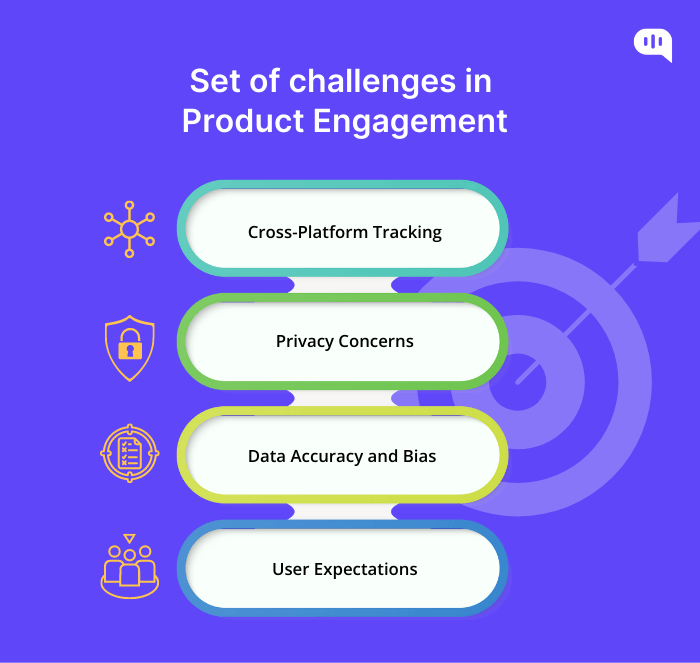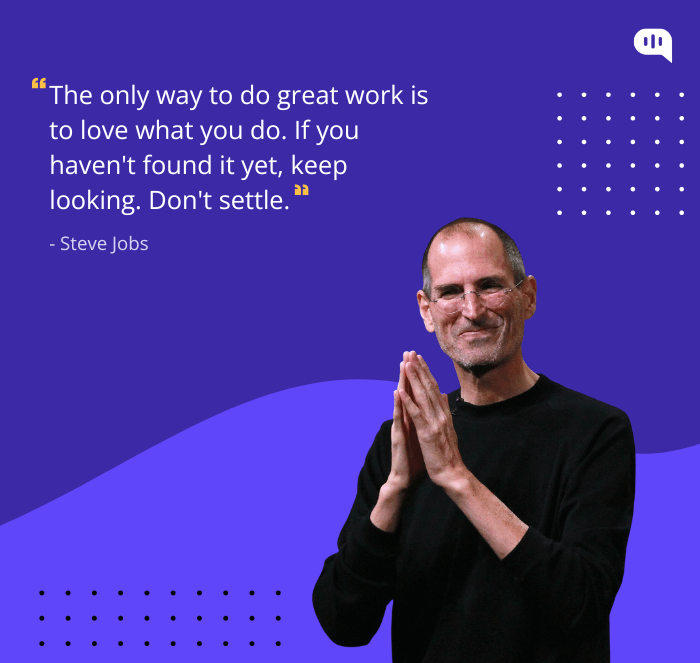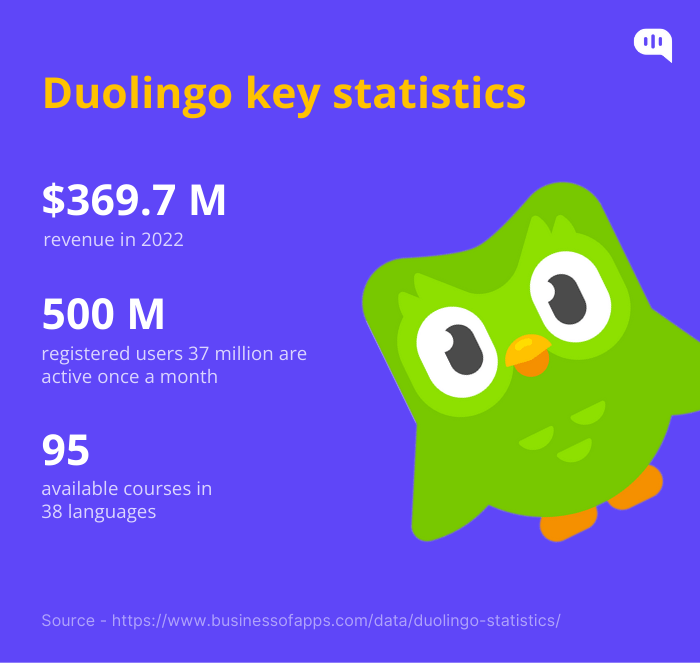Updated on April 22, 2024

TL:DR
- Product Engagement and what it means for different members of the organization.
- What is Product engagement?
- Measuring and analyzing product engagement.
- Examples of companies that have used product engagement to propel growth.
- Future of product engagement.
Product engagement acts as a key indicator of customer satisfaction and loyalty in any business. It shows how deeply users interact with your product, highlighting their level of interest, adoption, and ongoing value. Without tracking your product engagement, you’re essentially flying blind.
- As a Founder/CEO, you can’t answer the question “How are our accounts doing?” Without a way to measure product engagement, you’re left to rely on gut instinct or the opinions of your team. This can lead to poor decision-making and missed opportunities.
- As the Head of Product, you can’t tell if your recent releases are helping to drive overall engagement. You’re just shooting in the dark without a way to measure the impact of your product changes. This can lead to wasted time and resources.
- As a Customer Success Manager, you can’t prioritize your day’s work. Without a way to measure product engagement, you don’t know which accounts are thriving and which are struggling. This can lead to lost opportunities and frustrated customers.
- As Head of User Experience (UX), you strive to improve the product’s overall user experience. Without proper insights into how the users are engaging with the product, it is difficult to identify the pain points and areas for enhancement.
- As the Head of Sales, you can’t easily see which trial accounts are ready for a call. Without a way to measure product engagement, you’re left to cold-call trial accounts, hoping that they’re interested in your product. This can be a waste of time and resources.
- As Head of Marketing, you struggle to identify the most effective marketing campaigns and channels.
- As Head of Customer Support, you face difficulties in prioritizing support tickets and addressing customer concerns effectively.
All and all, tracking product engagement metrics is essential for each business function to perform effectively and make better decisions.
Thankfully, there are multiple tools available in the market now – such as Mixpanel, Userpilot, Hotjar, and Fullstory. These tools can provide a lot of data on a variety of product engagement metrics. These metrics include – user retention rate, active user count, session length, and stickiness .
More about these tools later.

What is Product Engagement?
Product engagement is a measure of how users interact with your product. It tells you how often customers use your product over time, which parts of your product they find most valuable, and where you may have engagement challenges that need to be addressed.
In the words of Dustin Moskovitz, Co-founder of Facebook –
“Product engagement is the lifeblood of any successful product. It’s what keeps users coming back for more, and it’s what drives growth. If you want your product to succeed, you need to focus on engagement.”

With the growing competition in the market, product engagement is becoming the key driver of growth for many companies. And rightly so! When users are engaged with a product, they are more likely to use it regularly, recommend it to others, and pay for it. This will lead to a virtuous cycle of growth and profitability.
Netflix, Slack, Spotify, and Duolingo are all examples of such companies that prioritized product engagement over any other metrics and the results are there for everyone to see.
But how to measure product engagement? What tools to use? Let’s look into it now
Measuring and Analyzing Product Engagement
Understanding how users use your product is essential, but it’s not enough to improve engagement. You also need to track specific metrics over time to see how users are interacting with your product.

Here are the steps that you can follow to measure this –
Step 1- Identify the metrics that are important to you
The very first step in the process is to know what to track. This could include things like –
- User retention rate: The percentage of users who continue using your product after a certain period of time.
- Active user count: The number of daily, weekly, and monthly users (DAU, WAU, MAU) who are actively using your product on a regular basis.
- Session length: The average length of time that users spend on your product during each session.
- Stickiness: The percentage of users who return to your product after their first session.
While the core objective remains consistent across different products, what you track will depend a lot on the unique nature and goals of your offering.
For example, for a Project Management tool, the important metrics to track could involve things like the task completion rate, project progress, user activity frequency, and the level of collaboration among team members.
On the other hand, for an e-commerce platform, metrics such as conversion rate, average order value, cart abandonment rate, product views, and purchase frequency are essential indicators of product engagement.
By recognizing the unique engagement factors relevant to your product, you can create a tailored measurement strategy that aligns with your objectives, unlocks actionable insights, and ultimately strengthens your product’s value proposition for your target users.
Step 2 – Set up Product Analytics
There are several great tools available in the market you can use to keep track of analytics for your business.

Here are a few of them –
- Google Analytics –
Google Analytics is a popular and powerful tool that can track a wide variety of metrics. It is easy to set up and use, and it is free for most businesses.
2. Mixpanel –
Mixpanel is another popular tool that is specifically designed for businesses interested in tracking different product metrics at one place. It offers a variety of features that are not available in Google Analytics, such as user segmentation and funnel analysis.
- 3. Heap –
Heap is a tool that offers a unique approach to analytics that is based on event tracking. This makes it easy to track user behavior and identify areas where you can improve your product.
- 4. Amplitude –
– Amplitude is a popular tool that offers a variety of features, including user segmentation, cohort analysis, and retention tracking
- 5. Pendo –
Pendo is a tool that helps you understand how users are using your product. It offers features such as user feedback, in-app surveys, and product tours.
Step 3 – Measure product engagement score
To calculate the product engagement score, you can follow these steps:
- Identify Key Engagement Metrics: Determine the important user actions and behaviors that signify engagement with your product.
- Assign Weightage: Assign relative weights to each metric based on its significance in measuring engagement.
- Normalize Data: Ensure that the data from different metrics is on a comparable scale.
- Calculate the Score: Multiply each metric value by its corresponding weight and sum them up to get the overall engagement score.
- Make the scores actionable: Once the score is calculated, rank the users based on their score to explore different opportunities.
Let’s understand this with the help of an example –
Let’s consider a fitness app with three key engagement metrics:
- Daily active usage (weighted 50%)
- Completed workouts (weighted 30%)
- Social interactions (weighted 20%)
Now let’s assume the below usage % of the three features by any user of this app –
- Daily Active Usage: 70%
- Completed Workouts: 65%
- Social Interactions: 50%
Engagement Score Calculation –
(70% * 0.50) + (65% * 0.30) + (50% * 0.20) = 35% + 19.5% + 10% = 64.5%
The product engagement score for this user in the fitness app is 64.5%.
Step 4 – Analyze the data
Once the engagement score for all the users is calculated, rank them from highest to lowest score or reverse to drive further action items such as –
- Identify the power users of the app – Find out what features they are using most and what makes them stick to the app
- Prioritize customer success efforts to drive great support for users with a low engagement score
- Drive targeted in-product notifications and marketing campaigns for different user types based on the score
- Formulate targeted engagement programs based on the user scores
This data can be also further used to gain insights by comparing engagement across different segments –
- New users vs. Old users
- Free plan users vs. Paid plan users
- Users with different access levels or on different plans
- People who are from different geographies
- Users of different age groups, etc.
Step 5 – Make changes to your product based on the data
With the data you have, you can now identify the factors that are preventing your product engagement from reaching its full potential and answering some of the questions like –
- What is the adoption of your new feature?
- Are you able to convert your free or trial users to paid users?
- What is your churn rate?
- Are your customers upgrading to higher plans or not?
Based on the findings, you can now start making those changes in the product. Here are some additional tips while deciding what change to make –
- Start with Clear Objectives –
Clearly define the objectives and goals you want to achieve with the changes – whether it’s improving user engagement, increasing conversion rates, or enhancing user experience. Having specific goals will guide your decision-making process and ensure the changes are aligned with your overall product strategy.
- Listen to your users –
Conduct user interviews, go through the user suggestions on new features, see which features they have liked or disliked, and go through the customer support chats from your contact center software– these can prove to be very insightful while deciding what to build and what to let go.
- Run A/B tests –
A/B testing is a great way to test different versions of your product to see what works best. You can test different features, different designs, and different marketing messages. By running A/B tests, you can find the combination of factors that will lead to the best engagement.
- Monitor Performance Continuously –
Continuously monitor the performance of the changes after implementation. Analyze data regularly to assess the impact on key metrics and user engagement and be prepared to revert or further iterate on changes if they do not yield the expected results.
Step 6 – Repeat the process
Once you have made changes to your product, it is important to repeat the process. Continue to track the metrics, analyze the data, and make changes to your product based on what you learn. This is an ongoing process, as your users’ needs and expectations will change over time.
As Steve Jobs said –
“The only way to do great work is to love what you do. If you haven’t found it yet, keep looking. Don’t settle.”

This quote applies to product engagement as well – if you want to create a product that people love to use, you need to be passionate about it. You need to be willing to listen to your users and make changes to your product based on what you learn. And you need to be willing to keep improving your product over time.
Let us look at some examples of how some of the most successful companies have been using product engagement for driving their growth –

- Duolingo – The world’s best way to learn a language
By prioritizing user engagement and creating a delightful learning experience, Duolingo has successfully grown into one of the world’s most popular language-learning platforms. Their focus on making language learning fun, personalized, and social has attracted millions of users and contributed to their ongoing success and expansion.
Duolingo key statistics
- It generated $369.7 million in revenue in 2022, a 47.3% year-on-year increase
- The app has over 500 million registered users, 37 million are active once a month
- Duolingo has 95 available courses in 38 languages
(Source – https://www.businessofapps.com/data/duolingo-statistics/)
Here are some of the things they did to drive product engagement –
- Gamification: Duolingo gamified the language-learning experience, turning it into an interactive and enjoyable journey. They implemented features like leveling up, earning rewards, and competing with friends, which motivated users to keep learning and engaging with the app regularly.
- Personalization: Duolingo personalized the learning experience for each user by tailoring the content to their interests and level of proficiency. This helped them to keep users engaged and motivated.
- Social features: Duolingo included social features that allowed users to connect with each other and share their progress. This helped to create a sense of community and motivates users to keep learning.
- Data-Driven Iterations: Duolingo team relied heavily on their user data to keep track the user engagement. Some of the key metrics they closely monitored were –
- Current users retention rate (CURR): The chance a user comes back this week if they came to the product each of the past two weeks
- New users retention rate (NURR): The chance a user comes back this week if they were new to the product last week
- Reactivated user retention rates (RURR): The chance a user comes back this week if they reactivated last week
- Resurrected user retention rate (SURR): The chance a user comes back this week if they resurrected (from a longer absence) last week
- A/B testing – Duolingo team A/B tested new ideas rapidly and continuously analyzed their user behavior and feedback to refine the learning experience, introduce new features, and address pain points, ensuring the app remained relevant and user-focused.
“We believe that the best way to learn a language is to make it fun and engaging. That’s why we use gamification, personalization, and social features to keep our users motivated and coming back for more.” – Luis von Ahn, CEO of Duolingo

A sharp focus on product engagement helped Duolingo give their users an exceptional learning experience.
At the same time, it helped them drive exponential growth for the company – highlighting the fact why product engagement is so important in driving business growth.
- Netflix
This streaming platform has become a global powerhouse in the streaming industry by leveraging product engagement strategies that prioritize user satisfaction and retention.
Netflix key statistics
- It generated $31.6 billion in revenue in 2022, a 6.7% increase year-on-year
- $14 billion of Netflix’s revenue was generated in North America, its largest market
- Netflix had a net income of $4.4 billion in 2022, an 12.2% decline on the previous year
- In 2022, Netflix had 220.6 million subscribers worldwide
Source: https://www.businessofapps.com/data/netflix-statistics/
Here’s how they have achieved this:
- Personalized recommendations: Netflix has a powerful recommendation engine that suggests movies and TV shows to users based on their viewing history and interests. This helps to keep users engaged and coming back for more.
Image source: Netflix homepage
- Seamless User Interface: The streaming platform provides an intuitive and user-friendly interface that allows viewers to easily browse, search, and discover new content. The focus on a seamless user experience encourages users to explore a wide range of shows and movies, keeping them engaged within the platform.
- Convenient streaming: Netflix allows users to stream content on a variety of devices, including smartphones, tablets, laptops, and TVs. This makes it easy for users to watch their favorite shows and movies wherever they are.
- A/B testing: The streaming platform constantly runs A/B tests on their product to see what works best for users. This helps them to improve the user experience and drive engagement.
- Tracking Key Metrics – To gain insights into how their product is performing and identify areas for improvement, Netflix tracks a variety of metrics, such as:
- Daily active users (DAUs): This metric measures the number of unique users who log into Netflix each day. DAU is a good measure of how many people are using Netflix on a regular basis.
- Session duration: This metric measures the average amount of time that users spend on Netflix each session. Session duration is a good measure of how their users are engaging with their content.
- Viewing time: This metric measures the total amount of time that users spend watching Netflix content each month. Viewing time is a good measure of how much users are enjoying the content being published by Netflix.
- Revenue per user: This metric measures the average amount of money that Netflix generates from each user each month. This helps Netflix track whether they are able to monetize their users successfully.
Future of Product Engagement
As new technologies emerge we will see more and more creative and innovative ways that businesses will use to engage users in a more personalized and engaging way.
Some of the technologies that are expected to play a role in the future of product engagement include:
- Artificial intelligence (AI): AI will drive hyper-personalization, predictive engagement, and emotionally intelligent interactions. With the help of advanced AI algorithms, it will be possible to analyze user data in real-time, enabling personalized content recommendations and proactive user engagement.
- Chatbots: AI-driven chatbots will play a significant role in product engagement, providing instant and personalized interactions with users. They will offer 24/7 customer support, address user queries, and assist with product recommendations, enhancing user experience and fostering engagement.
- Internet of Things (IoT): IoT devices will collect data on user behavior and preferences, allowing businesses to deliver context-aware and location-based experiences. This will enable personalized notifications and offers based on a user’s physical environment.
- Voice Technology: Voice-activated assistants and voice search will become more prevalent. Users will interact with products through natural language, simplifying engagement and making it more convenient.
- Augmented reality (AR) & Virtual reality (VR): AR and VR technologies will create immersive and interactive experiences for users. Product demonstrations, virtual shopping, and interactive training modules will enhance engagement and understanding of products.
Despite the potential benefits of these technologies, tracking product engagement in the future will also come with its own set of challenges –
- Privacy Concerns: With more data being collected and analyzed, user privacy concerns will continue to spike. Striking a balance between personalized experiences and respecting user privacy will be essential.
Here’s what Jeff Chester, Executive Director of the Center for Digital Democracy has to say –
“Artificial intelligence is a double-edged sword. On the one hand, it has the potential to revolutionize many aspects of our lives, making them more efficient, convenient, and enjoyable. On the other hand, AI also poses serious privacy concerns. As AI systems become more sophisticated, they will be able to collect and analyze more data about us, which could be used to track our movements, monitor our behavior, and even predict our thoughts and actions. This raises the alarming possibility that AI could be used to invade our privacy and even control our lives.”
- Cross-Platform Tracking: As users engage with products across multiple devices and platforms, tracking user behavior and interactions seamlessly will become more complex. Businesses will need to integrate data from various sources to obtain a comprehensive view of user engagement.
- Data Accuracy and Bias: With the increased reliance on AI-based tools to track and analyze product engagement data, there will be a risk of data bias which could lead to flawed insights which would further impact decision-making and engagement strategies.
- User Expectations: As technology advances, user expectations for personalized and frictionless experiences will rise. Meeting these expectations will require continuous innovation and staying ahead of user demands.
To summarize…
Product Engagement stands at the heart of success for any company and is the driving force that keeps users coming back, drives growth, and ensures long-term profitability.
Here are some of the key takeaways that can help you drive engagement for your product –
- Use data for making product engagement decisions: Utilize user data and analytics to make well-informed decisions about your product’s engagement strategy, ensuring it aligns with user preferences and behavior.
- Stay agile and adapt to changing user needs– Users’ needs are constantly changing, so stay agile and adjust your product engagement strategy to maintain relevance and user interest.
- Personalize user experience with AI and chatbots – Leverage AI-powered chatbots to offer personalized interactions, content, and recommendations, enhancing user satisfaction and engagement.
- Foster meaningful interactions – Focus on fostering meaningful interactions with users by providing helpful content, responding to user feedback, and inviting users to participate in online communities.
- Keep your customers at the center – Put your customers at the center of your product engagement efforts, ensuring their needs and satisfaction drive your decision-making process.
And most importantly,
Run a LOT of experiments!!!!
Do regular A/B testing to test out new ideas and hypotheses. The data collected through these tests will help you in generating a lot of insights into user behavior and how they engage with the changes you make. Use these insights to further iterate and refine your product.
This approach will ensure that your decisions are grounded in evidence rather than assumptions, leading to more impactful and successful engagement efforts.

CEO & Co-Founder of Kommunicate, with 15+ years of experience in building exceptional AI and chat-based products. Believes the future is human + bot working together and complementing each other.
At Kommunicate, we envision a world-beating customer support solution to empower the new era of customer support. We would love to have you on board to have a first-hand experience of Kommunicate. You can signup here and start delighting your customers right away.







